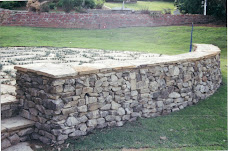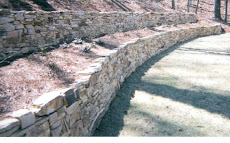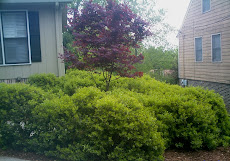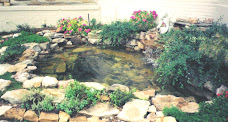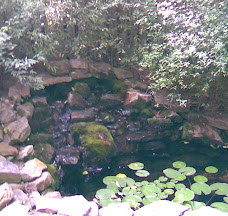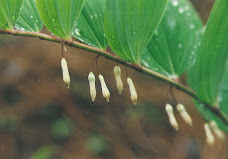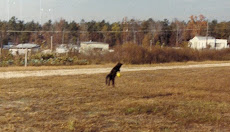the quilt that you can’t get enough of in bed
the brisk attitude in your step when you’re finally moving about
the smile that takes over when you sneak a peak through the blinds at the outside
let’s go show em’ what we’re made of!
Wednesday, October 31, 2007
waking up in fall
Posted by
themanfromearth
at
8:09 AM
0
comments
![]()
Labels: Rob's musings
Sunday, October 28, 2007
Pansy Planting Tips
Hey everyone,
Here are a few pansy planting tips for you. First of all, plant pansies when it is cool, like it is now in Central Alabama. Sometimes it gets cool in early September, but I don't let that fool me. I wait until at least October and then only if it's cool. The reason for this is because pansies thrive in cool weather and do not cope well with hot weather. The pansy plants will get leggy and stretched out when they don't get the coolness they desire.
Choosing a spot is also important (just don't plant pansies in too shady of a spot). Or, I should say, preparing a spot is important. You definitely want the soil you are placing these pansies in to be nice and loamy. Have you ever watched one of those clean cut landscapers on HGTV? You know...the guy that takes his shovel in his manicured hands and sinks it into lush, to die for, soil. That's how your soil should look. The pansies will love you for it. Now, I would caution you to not make the soil "too cushy" or your plants will dry out quicker than you like.
More on soil preparation since that is likely the most important aspect of this discussion. I prefer to fertilize my pansies when I plant them. Pansies are heavy feeders (like me!), so a nice little fertilizer application mixed into the soil before planting or sprinkled around each pansy after you've planted them, will do wonders. I would suggest using a dry, granular flower food that you can get in a 4 lb. tub or a small resealable bag at the big box stores. Most flower foods will have a higher middle number (Phosphorus) and that's a good thing! For pansies, I would not use Osmocote. It is a slow release fertilizer, but it releases it's goodies based on soil temp, mostly, and in the winter time, Osmocote or other 3 month fertilizers will not be as effective. After that initial feeding, do subsequent feedings using either the same fertilizer or a liquid fertilizer with a similar fertilizer analysis (the three numbers that tell you how much nitrogen, phosphorus, and potassium are in the fertilizer). Read the label for instructions, always!
Alrighty then...the next thing to remember is: 1. always slightly loosen the roots up just before planting them in the ground...slightly loosening them is the key,,,you don't want your pansies to look like a doggie chew toy after you're done loosening the roots. 2. don't plant your pansies too deeply. They should be planted a tiny bit high with the soil mounding up to the crown of the little root ball. If this sounds confusing, just plant the plants even with the surrounding soil. I will say this, though, a slightly raised planting bed is a great idea...sorry, that comment should have been under "preparing a spot". 3. Lastly, water your little pansy friend! Water him before you plant him and water him well after you've planted him. And keep watering as he grows for you.
OK,,,sorry, but that wasn't lasty....other random notes on pansies:
A. Bigger doesn't always mean better, especially when it comes to pansies. If I'm buying a flat of cell packs, for instance, I don't look for the biggest, tallest plants. I look for nice, compact, bushy plants and preferrably plants with flower buds swelling and ready to show a burst of color.
B. Dead head your pansies (this is where I am not so much like a pansy!). Take that spent bloom and pinch it right off...this practice will encourage more blooming.
C. And really lastly, enjoy your pansies. Smell them, look at them, and thank them for being so inspiring!
Posted by
themanfromearth
at
10:33 AM
0
comments
![]()
Labels: landscape tip
Thursday, October 25, 2007
Speaking of Mahonia…

What’s not to like? Well, let’s get the negatives out of the way. The biggest complaints regarding most Mahonias (there are several species planted in landscapes) is that they have thorns and that they are leggy.
The thorns are something we can’t do anything about, except that there are some species with thorns that aren’t as prickly as others. Also, just remember that when using Mahonia, don’t plant it on either side of a narrow passage way. The legginess issue is easily rectified by pruning out older taller canes down to within six to twelve inches of the ground. The Mahonia will rejuvenate and stay bushy from bottom to top.
What’s to like? Let’s start with the course texture and exotic appeal. Mahonia has a one of a kind form and texture. It’s unmistakable! Used in a mass planting, it takes on a dominant role in your garden. What else? Mahonia is a great plant for shady areas of your yard. You know how hard it is to find plants for that particularly shady spot….why not give Mahonia a try. Mahonia will also do well in sunny spots, but the color of the leaves really stands out in shade to part shade. Lastly, don’t forget the blooms and fruit. Mahonias bloom early in the spring with clusters of yellow spikes containing tiny flowers. It’s quite showy. After the flowering, look forward to very pretty powder blue to deep dark purlple berries.
One of the lesser known positive traits of Mahonia is that it is extremely drought resistant. Plant it and water it through the first year and then you can pretty much forget about it. Along with Nandina domestica, it is a great plant to install under extra large eaves or awnings.
Species and varieties of note:
Mahonia japonica ‘Bealei’ - the most commonly planted Mahonia. Grows to 10’; maintainable at 4’-5’. Zones 5-8. This particular plant is very easy to grow.
Mahonia aquifolium - Finer texture and requires a little more sun than M. japonica. Grows to 6’; maintainable at 3’. This species is more irregular and a little harder to grow than M. japonica. Still worthy of use, especially where an oriental effect would be desired.
Mahonia fortunie - A different looking Mahonia. It has narrow, fern-like leaves and a more compact habit of growth. Very attractive and less nasty thorns. The negative is that the species here is rated zones 8 and 9. In the Birmingham area, I’d only recommend it for use in protected situations like a courtyard.
Mahonia repens - creeping Mahonia… hard to find, but an interesting choice for your garden. This plant is rated zone 8 - 5, so hardiness shouldn’t be an issue. This mahonia will only grow 1.5’ - 2’, but will spread 3’ - 4’. It needs a little sun, but not too much and makes a great large scale ground cover or a small shrub grouping. If you can find it, give it a try.
All the Mahonias I’ve mentioned have yellow flowers and are evergreen.
Click on "Mahonia" to the left to view a short video of a Mahonia.
Happy Mahonia planting!!!
Posted by
themanfromearth
at
9:37 AM
0
comments
![]()
Labels: evergreen landscape plants





